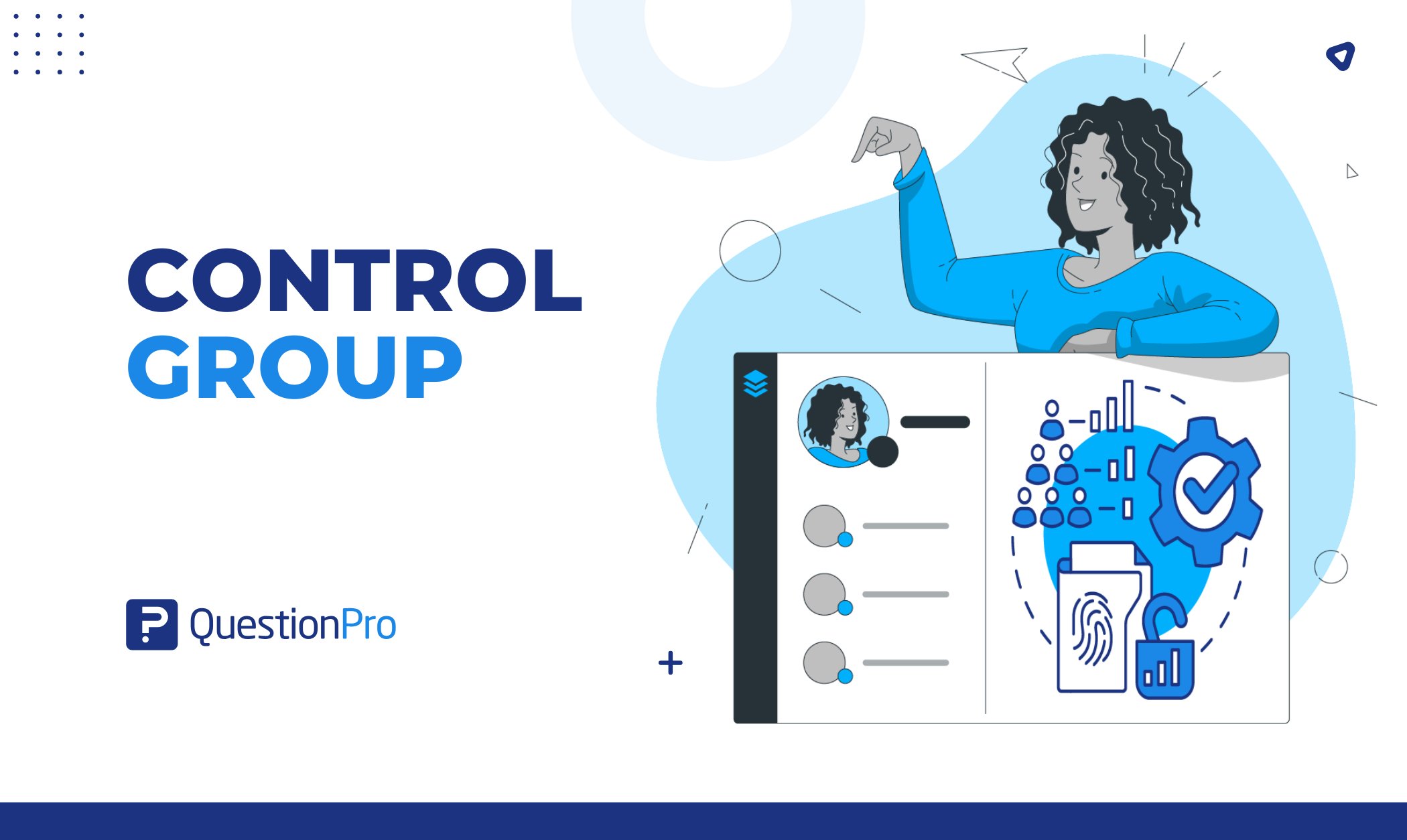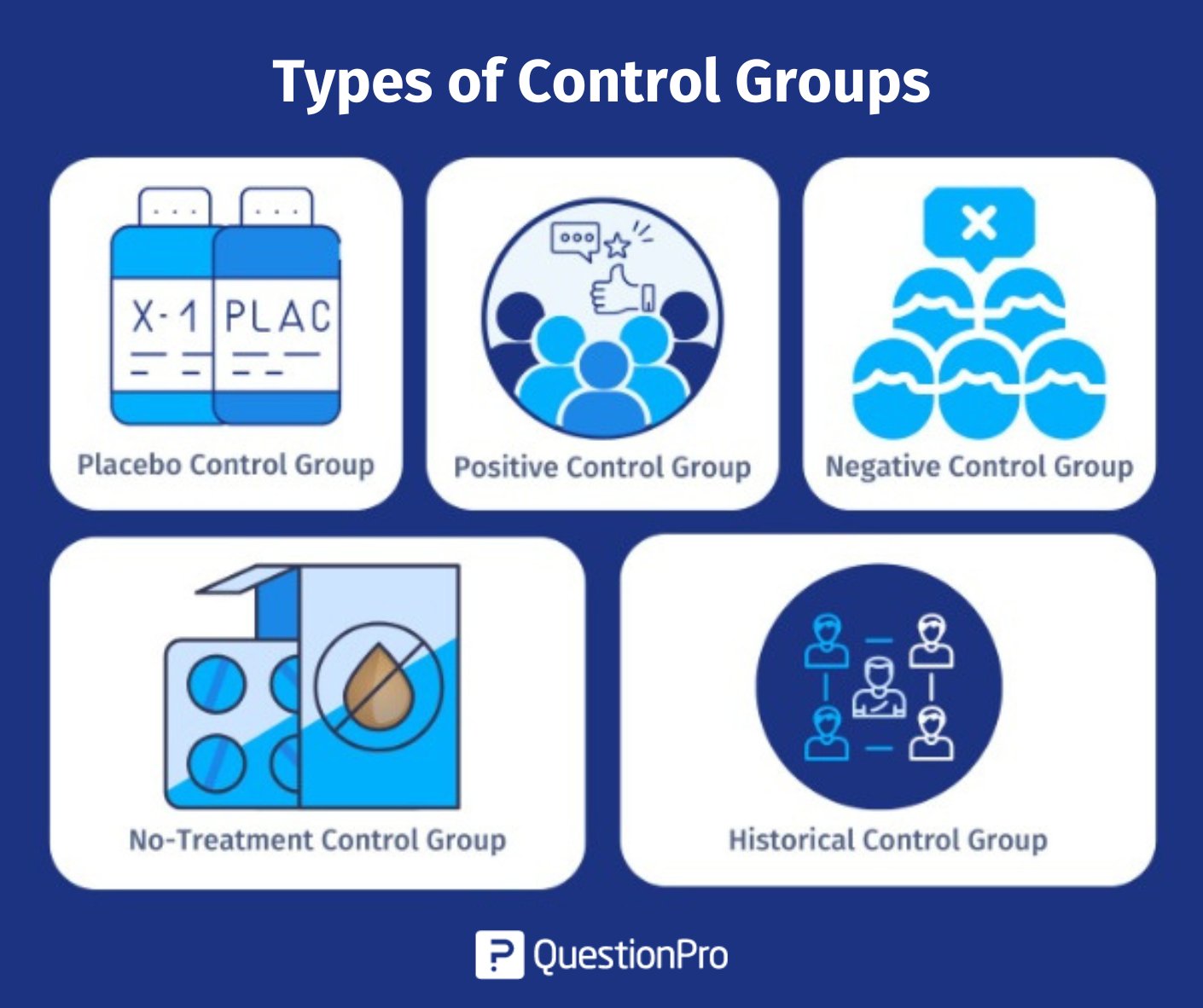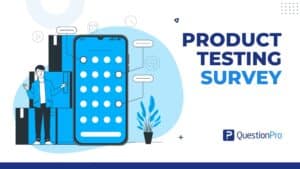
A control group is the foundation of experimental research. It isolates the independent variable, eliminates bias, and produces valid results. Researchers use this in healthcare, education, marketing, and psychology.
Suppose you’re testing a new drug. One group gets the drug, and the other gets a placebo or standard treatment. Why do we set it up that way? That’s because these groups ensure that the sole difference between participants is the therapy, which allows researchers to evaluate the drug’s true effect. This is what a control group is.
In this blog, we will discuss what a control group is, its types, and uses. We also explore practical examples and insights into how this group makes research more reliable.
What is a Control Group in Surveys and Research?
A control group is a set of participants in a study or survey that does not receive the experimental treatment or change being tested.
The control group shows what would happen if you didn’t make any changes. Then, you compare this group’s responses with the experimental group, which experiences the new feature, question, or treatment. By looking at the differences between the two groups, you can see the real impact of your change and know whether it actually made a difference.
For example, imagine you’re testing a new survey question designed to get more detailed answers from customers.
- Control group: Receives the original survey question.
- Experimental group: Receives the new, improved question.
After collecting responses, you notice that the experimental group provides longer, more detailed answers, while the control group’s responses stay short and generic. By comparing these two control groups, you can clearly see that the new question actually caused the improvement.
In traditional research, a control group might receive a placebo, a standard treatment, or no treatment at all. But in surveys or market research, it works a little differently. For example, your control group might:
- Not see a new ad or feature while the experimental group does.
- Answer the original version of a survey while others test a new design.
- Experience the existing service while another group tries out a new program or initiative.
By looking at the differences between the control and experimental groups, you can isolate the impact of your changes. This makes your insights more reliable, accurate, and actionable, so you know whether your new idea is actually working or not.
Discover More: What is Experimental Research?
Why Control Groups Matter in Research & Surveys
Control groups are essential for producing reliable, unbiased, and actionable insights in any research or survey study. Without a control group, it’s difficult to determine whether changes in results are caused by your intervention or by external factors.
In surveys, market research, or customer feedback studies, control groups help you:
- Isolate the effect of your changes: If you test a new survey question or customer experience initiative, the control group shows how participants respond under the original conditions.
- Eliminates bias: Randomly assigning participants to control and experimental groups reduces researcher and participant bias, ensuring a fair comparison.
- Measure effectiveness accurately: By comparing outcomes between groups, you can see whether a new strategy, product feature, or campaign truly impacts responses or behaviors.
Using control groups in survey research turns assumptions into measurable insights, allowing data-driven decisions that improve products, services, and customer experiences.
Different Types of Control Groups
If you understand different types of control groups, you can ensure that your results are credible and scientific. Let’s get into it:

1. Placebo Control Group
Sometimes, just thinking you’re experiencing something can influence responses. That’s why a placebo control group is important; it helps separate the effect of your treatment from the effect of participants’ expectations.
This group might receive a “mock” change that looks like a new feature but doesn’t actually change anything.
For example, you test a new survey incentive. The placebo group thinks they are receiving a bonus, but it has no actual value. Comparing their responses with the experimental group helps you measure the true impact of the incentive.
2. Positive Control Group
A Positive Control Group acts like a reality check for your experiment or survey. This group receives a treatment or condition that is already known to produce results. Its purpose is to confirm that your setup can actually detect real effects. Without a positive control, you might run the experiment and wonder whether a lack of results is due to your changes not working or because something is off in your design.
- Validates your experiment: Confirms that your survey or study setup can detect real effects.
- Provides a benchmark: Offers a reference point to compare your experimental group against.
- Detects setup issues: If the positive control doesn’t produce the expected results, you know the design needs adjustment.
- Builds confidence: Helps ensure that any observed differences are due to your intervention, not random factors.
For example, imagine you’re testing a new survey format to improve response rates. Your experimental group receives the new design, while the positive control group gets a survey format that’s already proven to increase responses. If the positive control performs as expected, you know your setup is working correctly, and comparing the experimental group to this benchmark shows whether your new format truly makes a difference.
3. Negative Control Group
A Negative Control Group is designed to show what happens when nothing is changed. This group doesn’t receive the new feature, survey question, or treatment being tested. Observing their responses helps ensure that any differences in the experimental group are actually caused by your intervention, not by random chance or external factors.
- It shows natural responses without changes.
- The negative control group helps rule out outside factors affecting results.
- Confirms that differences are due to your tested variable.
By using a negative control group, you can be confident that the effects you see in your experimental group are real and meaningful, giving your survey or research findings more credibility and reliability.
4. No-treatment Control Group
This group receives no changes or interventions at all. It helps you understand the natural behavior of your participants and serves as a true baseline for comparison.
Participants in this group answer the standard survey without any new questions, design, or incentives.
For example, you introduce a new survey layout to improve completion rates. The no-treatment groups continue with the old layout. By comparing the two, you can measure whether the new layout really helps.
5. Historical Control Group
When time and resources are limited, historical control groups provide context using data from the past. This group uses data from previous studies or clinical trials instead of recruiting new participants.
- To save time and resources when doing new studies, especially when conditions or interventions are the same.
- A new cancer drug trial uses patient outcomes from a previous study on existing treatments as the historical control.
Each control group is essential to making research results reliable and valid. By choosing the right control group, researchers can make sure their experiments are solid, unbiased, and scientific.
Designing an Effective Control Group in Surveys
Creating a well-designed control group is essential for generating reliable and actionable insights from your surveys or research studies. A carefully planned control group ensures that any observed differences in responses are due to the changes you’re testing, not external factors.
Key steps to designing an effective control group in surveys include:
1. Define Who Should Participate
Not everyone should be part of your survey. Think carefully about who to include and who to exclude. Participants with prior exposure to similar surveys might respond differently, which could skew your results. By clearly defining inclusion and exclusion criteria, you can ensure your control group reflects a natural baseline.
For example, if you’re testing a new survey design, including people who took a similar survey last week could affect their answers. They might recall questions or respond more quickly. By excluding them, your control group provides fresh, unbiased responses, giving you a true baseline to compare against the experimental group.
2. Randomized Control Group
Randomization prevents bias and keeps your control and experimental groups comparable. Here’s how to do it:
- Assign participants randomly to either the control or experimental group.
- Make sure demographics and behavior are balanced between groups.
- Use survey tools like QuestionPro to automate the process.
This ensures your groups are fair, so any differences in responses come from your change, not participant selection.
3. Use Blinding
Use single- or double-blind designs to reduce bias. Sometimes participants shouldn’t know which version of the survey they’re taking. In other cases, even the researcher can be “blind” to group assignments. This keeps responses natural and free from expectation.
For example, participants answer the survey without knowing if they’re in the experimental group. Their reactions reflect true behavior, not what they think you want to see.
4. Keep Conditions Consistent
Everything outside the tested change should be the same for both groups:
- Instructions are identical
- Question order stays the same
- Timing and platform are consistent
Consistency ensures that any differences you see are due only to the change you’re testing.
5. Balance Sample Size
If your groups are too small, results can be misleading. A large enough sample allows you to detect meaningful differences.
For example, if only 20 people take a survey, a single unusual response could skew the results. Plan for a statistically significant number of participants in both control and experimental groups.
6. Monitor Participation
Even the best setup fails if participants don’t complete the survey:
- Track responses as they come in
- Send reminders to non-responders
- Use tools like QuestionPro to automate follow-ups
High participation keeps your data clean and reliable.
7. Plan for Dropouts
Some participants will inevitably drop out. Anticipate this by recruiting a few extra people. That way, your groups remain balanced and your results don’t lose validity. If you need 200 participants per group, recruit 220–230 to account for potential dropouts.
By following these steps, you can create control groups that provide valid baselines, making your survey results trustworthy and actionable.
Applications of Control Groups Across Research & Feedback
Control groups are not limited to clinical trials; they are a powerful tool across surveys, market research, and customer feedback studies. They provide a baseline to measure the impact of changes, interventions, or new initiatives.
1. Market Research
In market research, control groups are essential for understanding how changes impact your audience. They allow you to see the real effect of new campaigns, product features, or designs by providing a baseline to compare against.
Two of the most effective ways control groups are used in market research are A/B testing campaigns and product testing.
| Criteria | A/B Testing Campaigns | Product Testing |
| How It Works | The control group sees the original ad, website, or feature. The experimental group sees the new version. Compare engagement, clicks, or conversions. | The control group uses the current product. The experimental group tries the new feature, design, or packaging. Compare satisfaction or usability. |
| Example | Testing an email: Control group gets the current email; experimental group gets a redesigned email. If clicks increase, the new design works. | Testing a new app feature: Control group uses the old version; experimental group uses the update. Higher satisfaction shows the feature is effective. |
2. Customer Feedback & Experience (CX)
Here, control groups help you refine surveys and programs before rolling them out widely.
- Survey testing: The control group takes the original survey, while another group gets a revised version. If the updated format improves clarity and response quality, you’ll know it’s worth adopting.
- Program evaluation: Say you launch a loyalty program. By comparing customers in the program with a control group not enrolled, you can see whether it truly boosts satisfaction and repeat purchases.
3. Employee Engagement & HR Research
In organizations, control groups are a smart way to separate real results from hype. Imagine rolling out a new wellness initiative:
- One group continues with business as usual (control).
- Another group gets access to the program (experimental).
By comparing engagement scores or productivity data, you’ll know whether the initiative is driving change or just creating extra noise.
4. Healthcare & Education
Control groups have long been essential in clinical trials to test treatments and in education to evaluate new curricula. While these are classic examples, the same principle now shapes how businesses and researchers approach surveys, feedback, and performance measurement.
By applying control groups in these contexts, organizations can make data-driven decisions, confidently identify what works, and optimize strategies based on reliable evidence.
Control Group vs. Experimental Group in Surveys & Research
Understanding the difference between control and experimental groups is key to designing meaningful surveys and research studies. Both groups serve distinct purposes but work together to reveal the true impact of your intervention or change.
| Critera | Control Group | Experimental Group |
| Treatment/Change | Participants do not receive the treatment, change, or new feature being tested. | Participants experience the new treatment, survey design, or feature. |
| Purpose | Provides a baseline for comparison. | Provides a baseline for comparison. |
| Measurement | Measures the outcome without influence from the tested change. | Measures how responses or behaviors change due to the tested variable. |
| Reliability | Ensures any observed differences are meaningful and not caused by external factors. | Demonstrates the direct impact of the intervention or change. |
| Example | In a survey redesign test, the control group answers the original survey format. | In the same test, the experimental group answers the updated version with new wording or design. |
By clearly defining control and experimental groups, researchers can isolate effects, reduce bias, and generate actionable insights from surveys and studies.
Challenges and Limitations of Control Groups in Surveys
Control groups are a key tool for reliable survey insights, but they come with practical challenges that can affect your results if not carefully managed. Understanding these limitations helps you design better studies.
- Ethical Concerns: Withholding new features or benefits from a control group can raise fairness issues.
- Small Sample Sizes: Too few participants make results unreliable and harder to trust.
- Limited Applicability: Findings from a small or specific group may not represent the larger population.
- Outside Influences: Timing, mood, or external events can affect survey responses beyond your control.
- Participant Dropout: Uneven dropouts between groups can distort comparisons and weaken results.
Despite these challenges, well-designed control groups, especially when combined with tools like QuestionPro, can still produce actionable and reliable insights, allowing organizations to make informed decisions based on survey or feedback data.
How QuestionPro Helps You Manage Control Groups
QuestionPro makes it easy to design, manage, and analyze control groups for surveys, market research, and customer feedback studies. Its platform ensures that your experiments are reliable, unbiased, and actionable.
Managing control groups in surveys can feel overwhelming, but QuestionPro simplifies the process, letting you focus on insights rather than logistics. Here’s how it supports you:
1. Randomization
QuestionPro ensures participants are fairly and randomly assigned to either the control or experimental group. This eliminates bias and keeps your study reliable.
You can:
- Automatically split respondents without manual work.
- Ensure each group has comparable demographics and behaviors.
- Avoid selection bias, so results reflect real differences.
2. Survey Branching and Logic
Branching and logic help you tailor the survey experience for each group. With QuestionPro, you can:
- Show different questions or survey paths to control vs. experimental groups.
- Test new features or questions only on the experimental group.
- Keep the control group on the original survey for accurate comparison.
3. Segmentation and Analysis by Group
Once your survey is complete, QuestionPro makes it easy to analyze the data by group. You can compare responses between control and experimental groups to see the direct impact of your changes. The platform also allows you to visualize trends, spot differences, and generate reports that make interpreting your results clear and actionable.
4. Data Security and Compliance
Collecting survey responses often involves sensitive information, and QuestionPro takes this seriously. All participant data is stored securely, and the platform meets strict compliance standards.
This means you can manage employee surveys, customer feedback, or any sensitive study with confidence, knowing that privacy is protected and your results are trustworthy.
5. Scalability
Whether you’re testing a new feature with a small focus group or running a large-scale survey across thousands of participants, QuestionPro scales effortlessly. It allows you to manage multiple control and experimental groups at the same time, keeping everything organized and efficient without adding complexity.
Conclusion
Control groups are the foundation of reliable and actionable research. Whether you’re conducting surveys, market research, customer feedback studies, or employee engagement assessments, using a control group allows you to isolate the effect of your changes or interventions, reduce bias, and ensure accurate comparisons.
By understanding the types of control groups, designing them effectively, and applying them across research and feedback studies, you can improve the quality and credibility of your results.
QuestionPro makes managing control groups simple with features like randomization, branching logic, segmentation, and advanced analytics, enabling you to gather actionable insights confidently.
Start using QuestionPro to design and manage control groups for your next survey or research study, and turn your data into meaningful decisions.
Frequently Asked Questions (FAQs)
Answer: A control group is a set of participants that does not receive the experimental change or intervention, providing a baseline for comparison with the experimental group.
Answer: Yes! Control groups are ideal for testing new ads, product features, or customer experience initiatives. They show the impact of changes compared to participants who experience the original conditions.
Answer: QuestionPro allows you to randomize participants, apply survey branching, segment responses, and analyze results between control and experimental groups, ensuring unbiased, actionable insights.
Answer: The control group does not receive the treatment or intervention, serving as a baseline. The experimental group receives the intervention, allowing you to measure its effect on responses or outcomes.
Answer: Control groups are crucial because they help you isolate the true effect of changes, eliminate bias, and ensure your survey findings are reliable and actionable.







